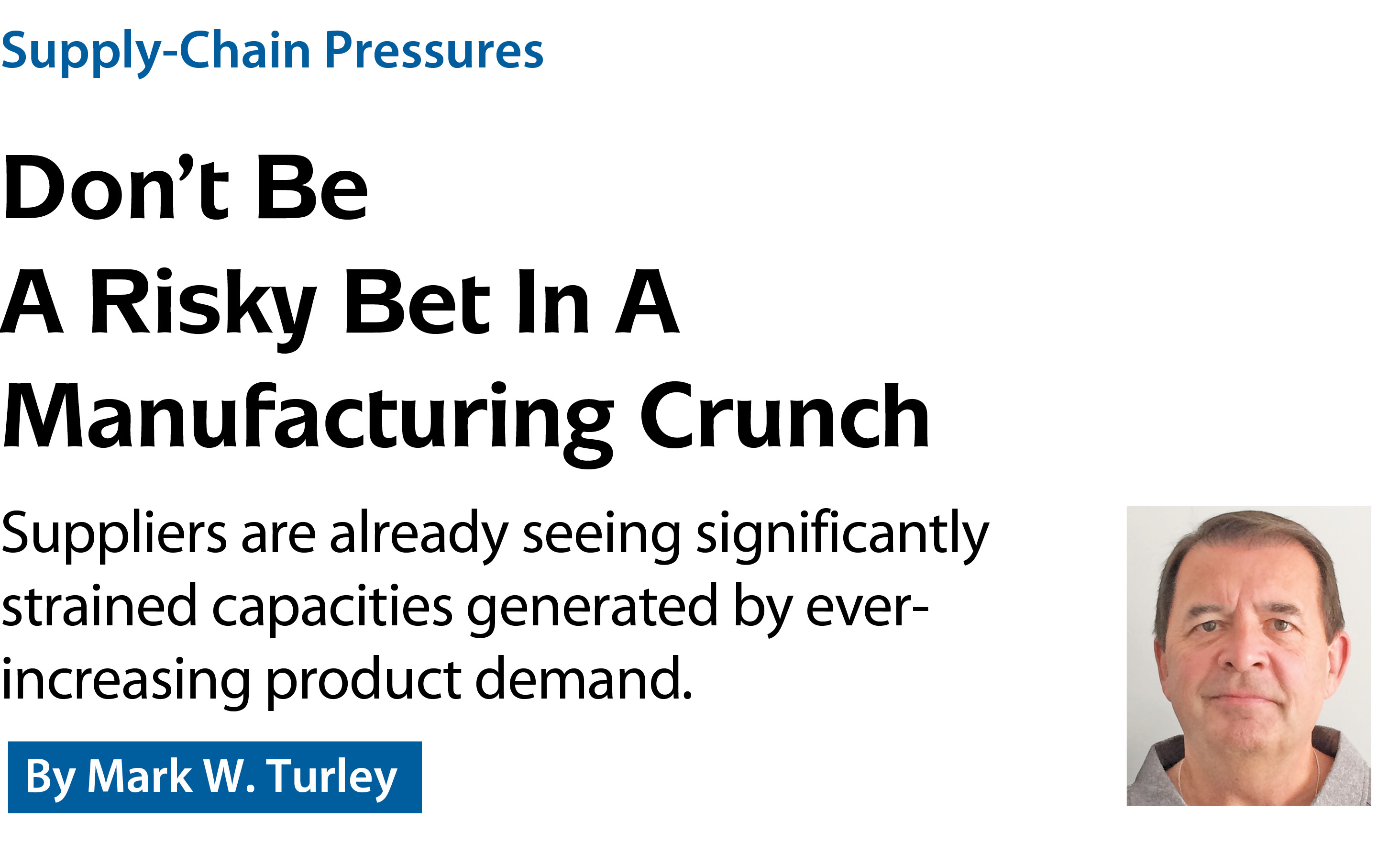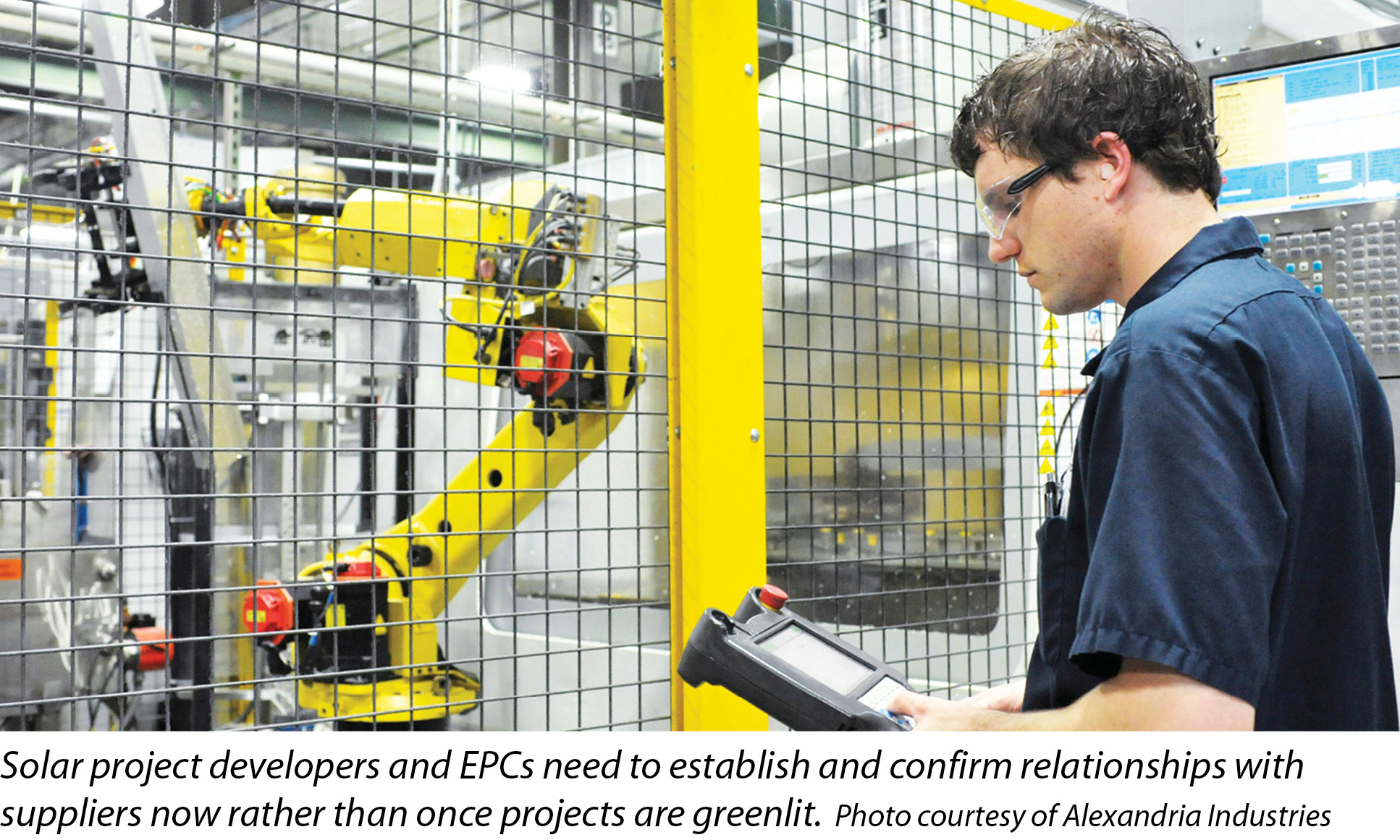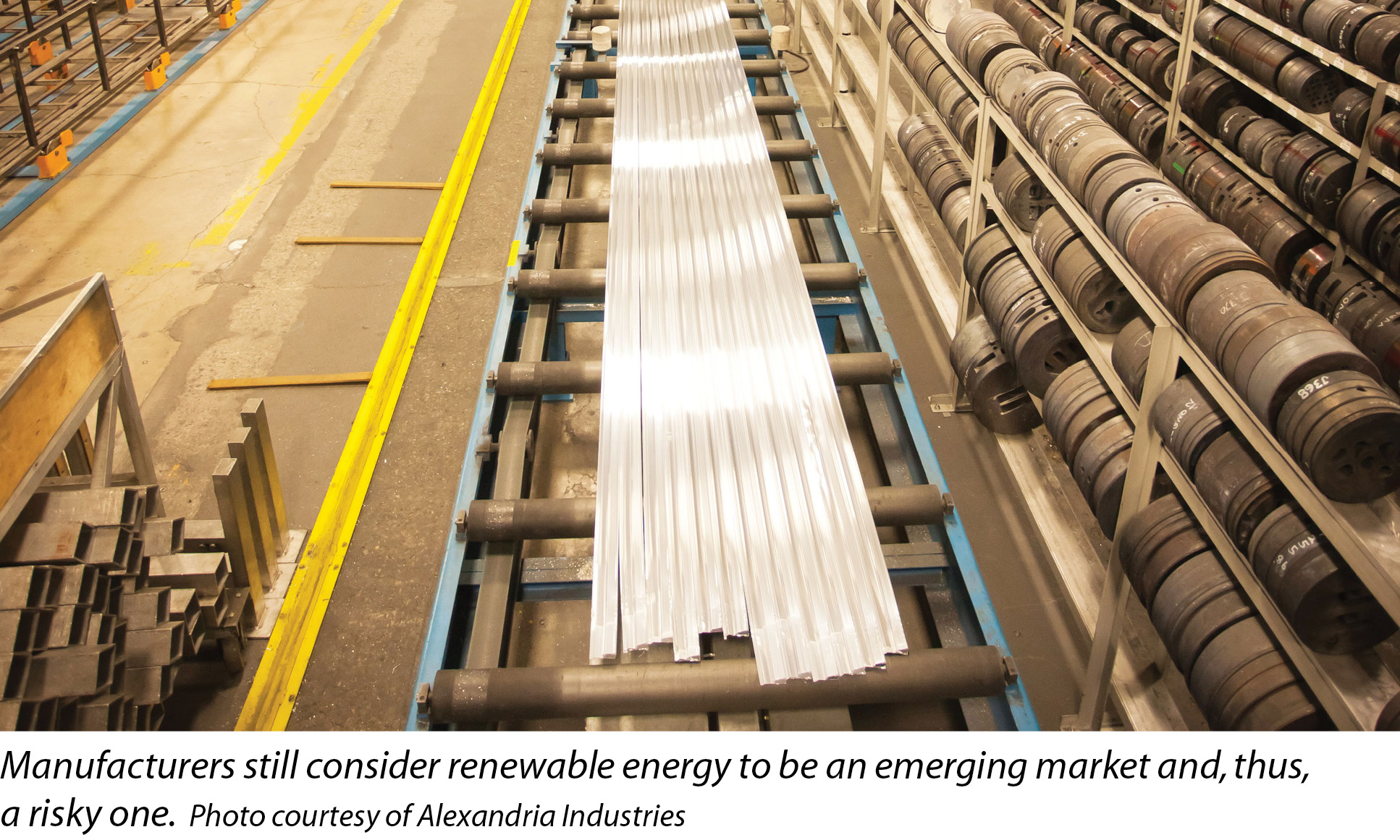

301 Moved Permanently
As 2016 develops, the solar market could see unprecedented sales volumes for photovoltaic system suppliers. There are even indicators that great demand will continue into 2017 and beyond based on cost-reduction trends. With all of the action in the market, mounting and racking suppliers may face an extremely high demand for aluminum extrusion or steel components.
Developers and engineering, procurement and construction companies (EPCs) that are depending on the supply chain need to know that “just in time” (JIT) performance ratings, used as a key performance indicator, may soon be replaced by metrics aimed squarely at available capacity and cost.
This is because suppliers of mounting, racking and associated products manufactured from aluminum, galvanized steel or other materials are already seeing significantly strained capacities generated by ever-increasing product demands from both inside and outside of the renewable energy market. The onset of 2016 will most certainly increase the pressure on these suppliers to serve their varied markets.
According to the 2015 Industrial Production and Capacity Utilization (IPCU) - G.17 report published by the U.S. Federal Reserve, U.S. manufacturers are currently utilizing more than 76% of available capacity - a portion on par with the 78.5% average for the years 1972 through 2014. This is a strong indicator that U.S. manufacturing has recovered well from a record-low utilization of 63.9% in 2009. With utilization of capacity already rebounding across most sectors of manufacturing, we can see why the rapidly growing solar market can stress the manufacturing sector.
The IPCU states, “Nearly all major categories of durable goods industries moved up, and gains of 1% or more were recorded by non-metallic mineral products; wood products; electrical equipment, appliances and components; and primary metals.” Though taking just a snippet of information from this report can sometimes be dangerous, in this case, increased capacity utilization across a range of markets supports the theory that an emerging market may have problems securing the capacities its demands will need.
It is difficult to definitively state the amount of extruded aluminum and metal manufacturing capacities that contract manufacturing suppliers allot to the renewable market, but over the years, there has been hesitation to offer anything beyond a conservative percentage of their available capacities. Some of the more common reasons for this conservative approach to the renewable market include the following:
- Manufacturers still consider renewables to be an emerging market in the U.S. Though they expect investments to achieve higher returns, they also realize these come with greater risks;

- Market consolidation, departures and an ever-changing landscape have been the norm rather than the exception;
- Racking and mounting companies continue to consolidate; and
- Panel manufacturers look to reduce costs and improve efficiencies, which has the potential to put their business models at risk for financial collapse.
Manufacturers prefer to spread available capacities evenly among a diverse market mix and aim to especially avoid a concentration of capacity in an emerging market. They also prefer to spread capacity - approximately 17% - evenly among a reasonable number of customers within each market. A manufacturer will split its available capacity, for example, among its five or six renewable energy market customers.
Using this rough guideline, a manufacturer with diverse customers and a healthy appreciation of risk would generally only allocate 1.7% to 3.4% of its overall manufacturing capacity to any one specific customer, with the riskier sectors being on the lower end of the range.
Manufacturers consider the financial risk a reason to assess capacity allotment carefully, taking a much more conservative approach to allocating capacity to riskier sectors. The financial drivers, specifically, revolve around limiting that financial risk, balancing payment terms versus profit potential, and working closely with developers and EPCs to avoid at-risk financial business opportunities.

Take action today
Manufacturers appreciate and need timely and accurate forecasts to plan their production requirements. So, what can developers, EPCs, and mounting and racking suppliers do? Consider the following:
- Establish and confirm relationships with suppliers now rather than once projects are greenlit;
- Properly forecast needs as soon as possible;
- Monitor production demands - both near- and long-term;
- Develop a robust dialogue with key primary and secondary manufacturing suppliers because back-up capacity may become necessary. Dual sourcing could be a strategic solution to the capacity-shortage issue; and
- Communicate early and often within your entire supply chain.
With such best practices in place - as well as a strong commitment to the customer-manufacturer relationship - developers and EPCs can potentially avert capacity issues prior to reaching critical delays.
The relationship should also be a two-way street. Manufacturers and producers need to share in this responsibility by alerting customers about any equipment or capacity concerns as early in the planning stage as possible. With all sides taking a fair share of the responsibility, available manufacturing capacity can serve many markets - even risky ones. Also, renewable energy can go a long way toward shedding its status as an emerging market.
Supply-Chain Pressures
Don’t Be A Risky Bet In A Manufacturing Crunch
By Mark W. Turley
Suppliers are already seeing significantly strained capacities generated by ever-increasing product demand.
si body si body i si body bi si body b
si depbio
- si bullets
si sh
si subhead
pullquote
si first graph
si sh no rule
si last graph